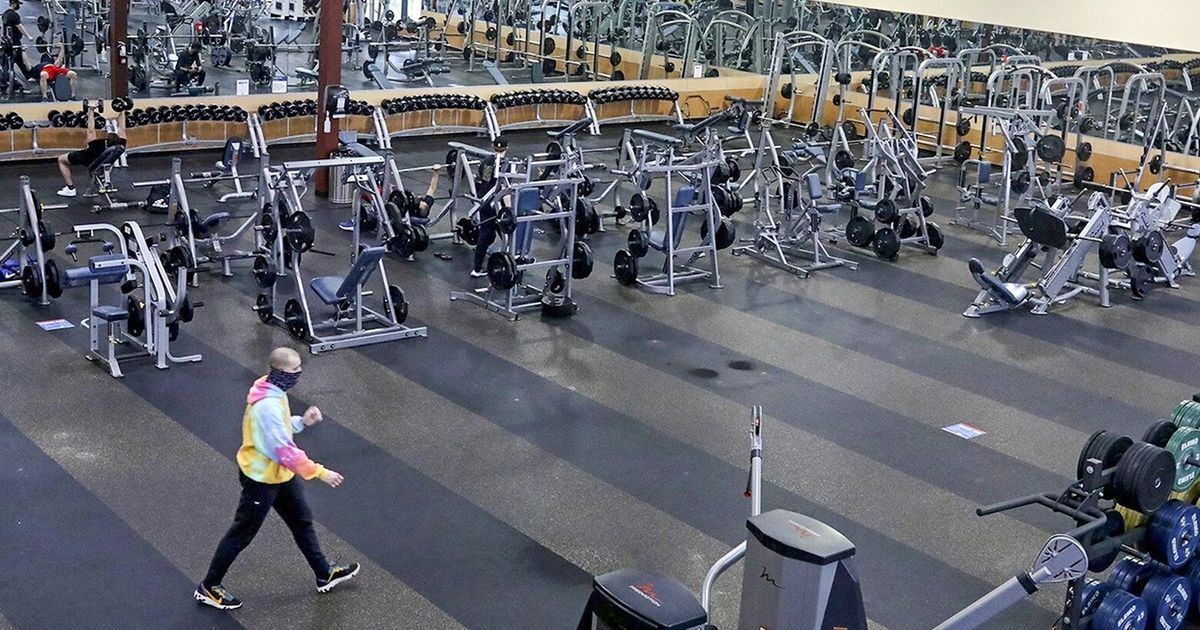The pandemic has changed many aspects of our lives, including the way we exercise. As gyms closed in 2020 to help prevent the spread of COVID-19, many of us are trying to find alternative ways to stay fit.
Washington gyms have been open again for more than a year. The last state-mandated lockdown lifted in January 2021. But how many of us have returned to the gym?
New data from market research firm Nielsen shows gym memberships in the Seattle area are still well below pre-pandemic levels. In fact, Seattle experienced one of the largest drops in gym membership among any large US metropolitan area.
Surveys conducted in 2018 and 2019 showed that about 28% of Seattle-area adults, or about 875,000 people, had a gym or health club membership. In the latest surveys in 2021 and 2022, that number dropped to 18%, or 595,000 people, or 280,000 fewer people.
The drop in gym memberships from 2018-2019 has affected almost every major metropolitan area in the US, and nationally, there were about 11 million fewer gym members, Nielsen data shows.
Among the 50 most populous metro areas, Seattle’s 10 percentage point drop ranks as the seventh largest decline in gym memberships. San Diego had the steepest drop with about 15 points.
Only one metro area among the 50 largest saw an increase in the proportion of adults who belong to a gym: Providence, Rhode Island. It was not a big change, growing from 19% before the pandemic to 20% in the latest data.
So does a decline in gym membership mean people have become more sedentary since the pandemic?
Not necessarily. While gyms are the most common way to get regular exercise, you certainly don’t need to belong to a gym to stay in shape. Some people who no longer feel safe going to a gym have switched to home workouts, invest in exercise equipment or participate in online fitness classes. Nielsen data shows that 23% of Seattle-area adults own exercise equipment at home.
I was among those who canceled my gym membership in 2020, but returned in early 2021. It was obvious there were a lot fewer people, but I don’t think many of us complained – no one likes a crowded weight room or waiting for for a machine to free itself. But it’s certainly not good news for gym owners and employees. The fitness industry was one of the hardest hit by the pandemic, with many gyms closing.
The Nielsen data also shows that there hasn’t been a big change in participation in certain types of exercise in the Seattle area. For example, the most recent figures show that around 16% of local adults said they had done yoga or Pilates in the last 12 months; that has not changed from the pre-pandemic period. About 32% have ridden a bicycle, which has not changed either. And 24% have gone running, which is only slightly lower than the pre-pandemic period.
One form of physical activity in particular: hiking: exploded in popularity during the pandemic in Seattle.
On the other hand, group swimming and fitness classes saw a significant drop in participation from the 2018-2019 period.
There are research showing that the pandemic has resulted in an overall decrease in physical activity. There’s also data showing that the so-called COVID 15 phenomenon was a real thing: Many Americans gained some unwanted weight during the pandemic, which was likely due in part to a decrease in physical activity.
Nielsen data shows, unsurprisingly, that younger people are more likely to belong to a gym than older people. But it’s not a big difference. About 22% of people ages 18-34 in the Seattle area have a membership, compared to 18% of people age 65 and older.
While there has been a decline in gym memberships among all age groups, the 35-49 age group stands out. In the run-up to the pandemic, 33% had a gym membership, the highest of any age group. That number plummeted to just 18% in the latest data release.
There was also a much larger drop among men than among women. Before the pandemic, 32% of men in the Seattle area had a gym membership, which dropped to 19% in 2021-2022. Among women, the number decreased more modestly, from 24% to 17%.
